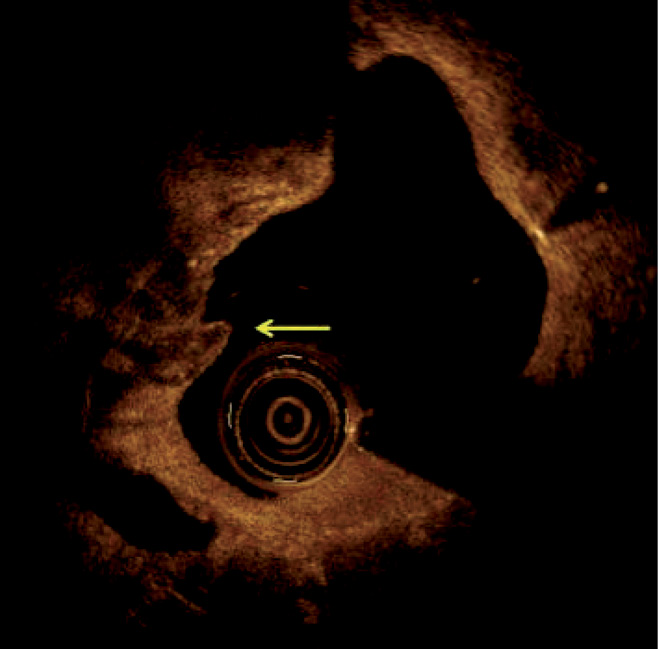The cause of repeated balloon bursting during PCI remains speculative. Using optical coherence tomography (OCT), we investigated the pathological substrate of a severe mid right coronary artery (RCA) stenosis in a 56-year-old patient with a history of stable angina in whom three consecutive balloons (two semi-compliant and one non-compliant) had burst at relatively low pressure (around 10 atm) before achieving adequate stenosis dilation. The high spatial resolution of OCT revealed the presence of a sharp calcium spicule protruding into the lumen (arrow). Cutting balloon dilation was then successfully performed, and the procedure was completed with stent implantation.
In addition to revealing why balloon rupture may occur in calcific stenoses like the one treated, this case illustrates the enormous potential of high-definition OCT images to outline specific features of coronary atheroma (Figure 1).

Figure 1. Optical coherence tomography in the RCA revealing calcified tissue with a sharp calcium spicule protruding into the lumen (arrow).
Conflict of interest statement
The authors have no conflicts of interest to declare.

